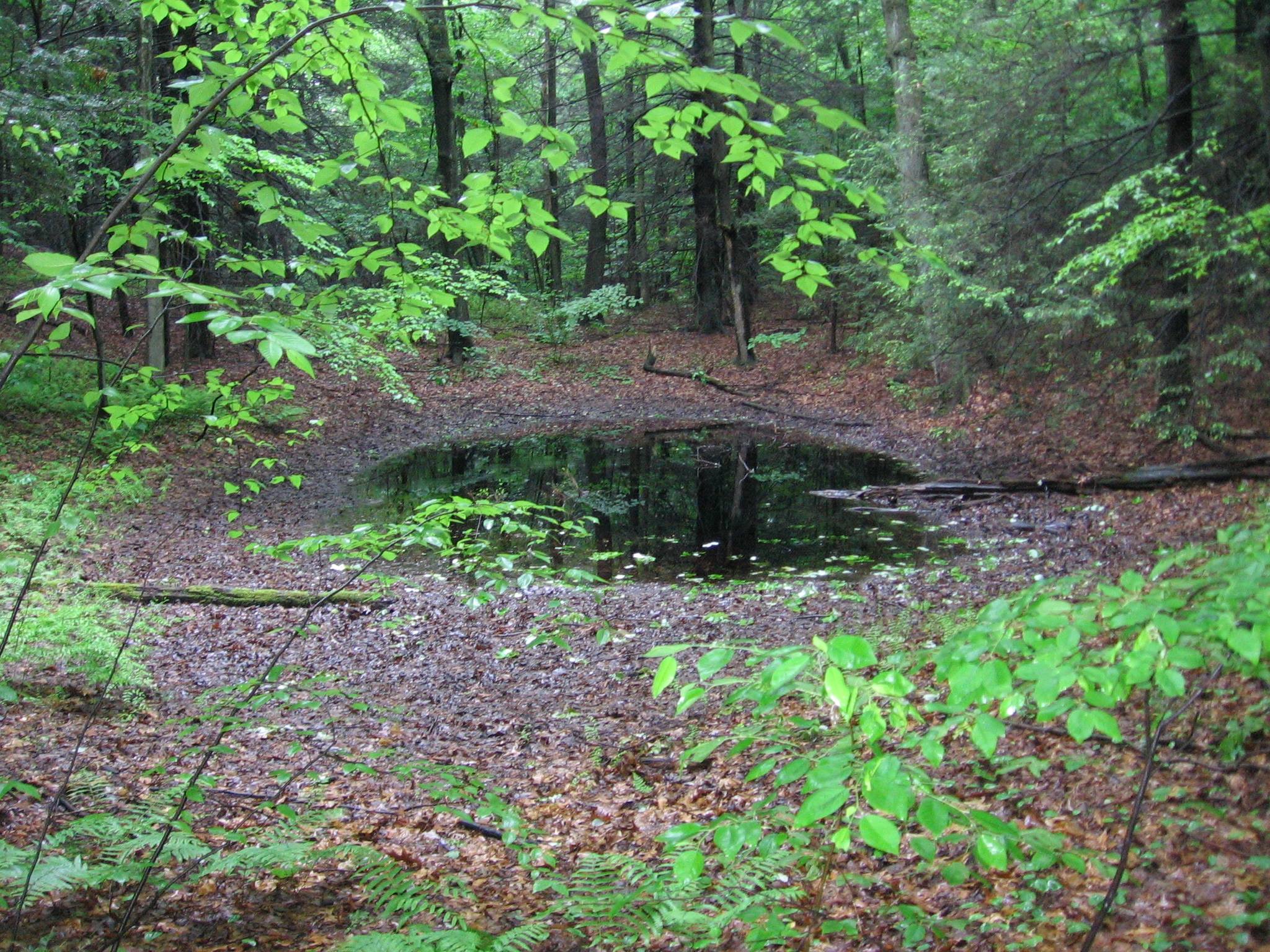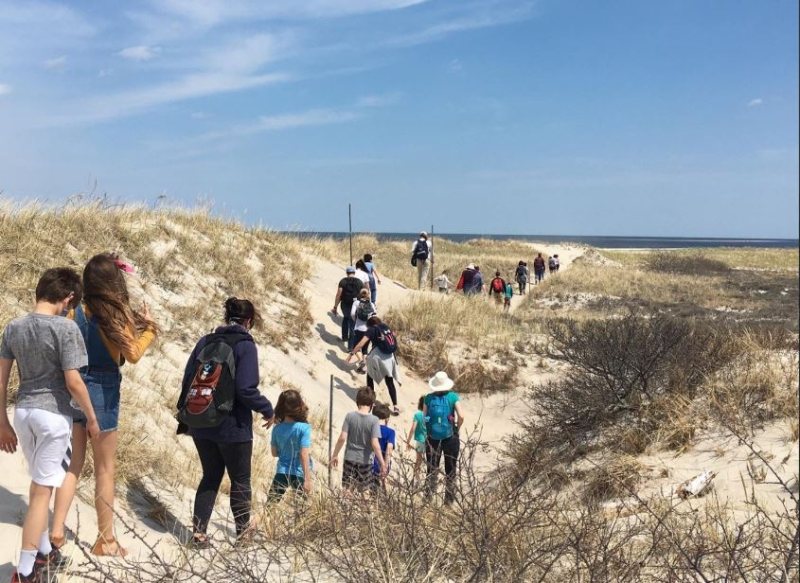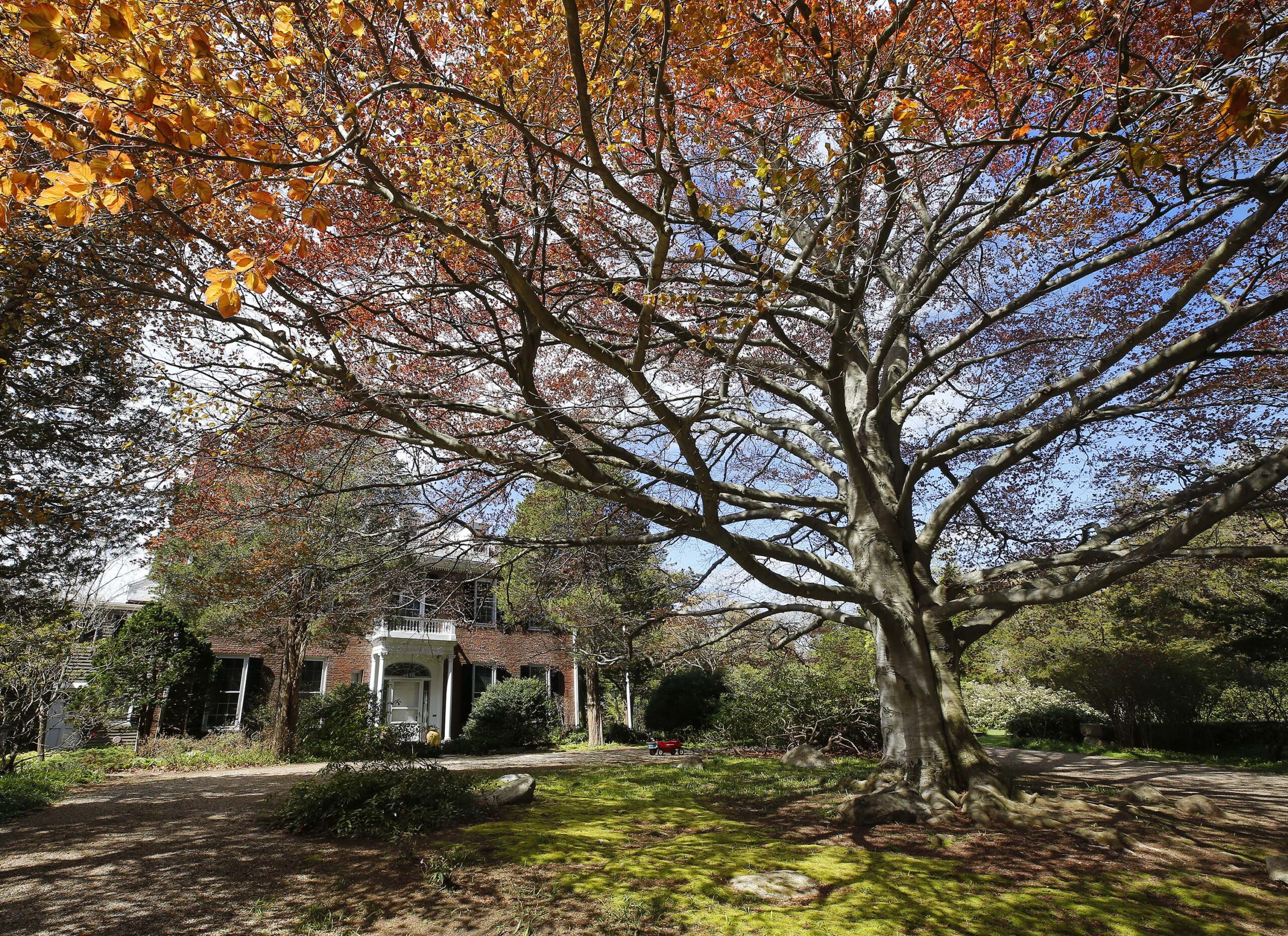
It has been a long cold winter, and, for those of us who like the snow, there have been ample opportunities for skiing, snowshoeing, sledding, and skating.
But I can feel that spring is just around the corner, and I am eagerly awaiting the first sounds of spring. There are many of course – the spring serenades of red-winged blackbirds, robins, and other songbirds, the pitter-patter of April showers, and the splashing of small human feet in puddles. One of my most anticipated sounds of spring, though, is the chorus of wood frogs echoing from vernal pools across the landscape. Wood frogs are one of several species that are dependent upon vernal pools for breeding and survival.
Vernal pools are generally small seasonal pools found throughout Massachusetts that fill up with water for part of the year, but don’t hold it long enough to support populations of fish. Some vernal pools fill up in the late fall or winter, some the early spring, and there are even some that buck the “vernal” name and hold water all year long. Usually, vernal pools completely dry up by the middle or end of the summer each year, or at least every few years. The key, biologically speaking, is that they don’t support fish which is critical to the reproductive success of many amphibians (wood frogs, spotted salamanders) and invertebrate species (fairy shrimp, caddisfly larva) that rely on breeding habitats free of fish predators.
Any day now, when we get a big soaking rain with a nighttime temperature over 40 degrees, the amphibian migration to vernal pools will happen. Be on the lookout for wood frogs and spotted salamanders crossing the road and listen for the calls of the wood frogs (sounds like quacking). These solitary species spend most of the year in the woods surrounding the pools, and only come to the vernal pools in the spring to breed before heading back into the uplands. For some of the most secretive salamanders, seeing the animals moving to the pools or in the brief time they are at the pools may be our best chance of seeing one. And they are impressive little creatures!
Some vernal pools are protected by the Massachusetts Wetlands Protection Act regulations and local bylaws. Families, citizen scientists, and other vernal pool enthusiasts can document what species are using a particular vernal pool and then send that information into the Natural Heritage and Endangered Species Program, who will officially “certify” the pool. Join The Trustees’ at one of our many properties to learn more about the species that rely on vernal pools as well as how to certify a pool to ensure that it is able to support these species into the future.
And enjoy the springtime serenade!



